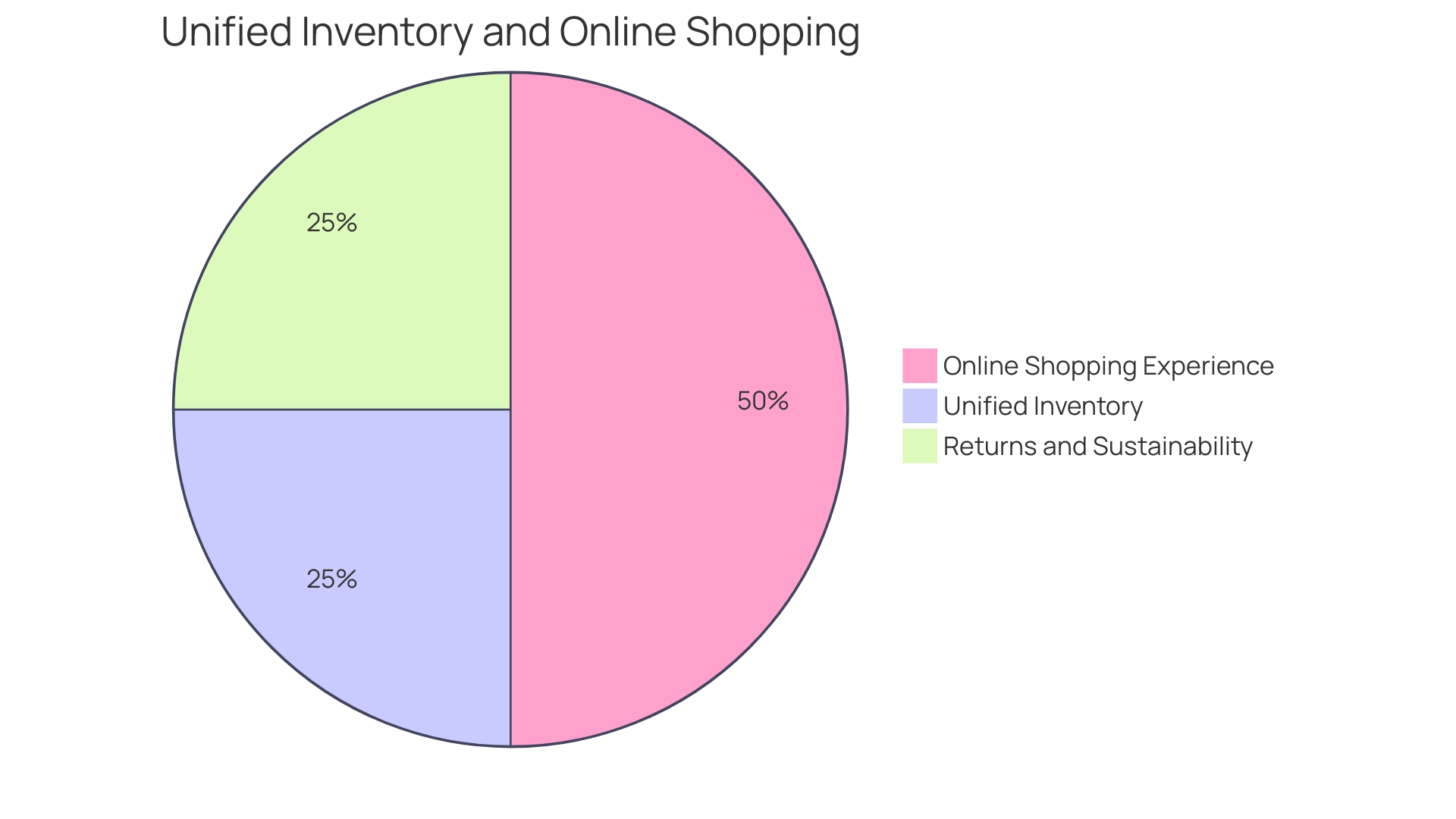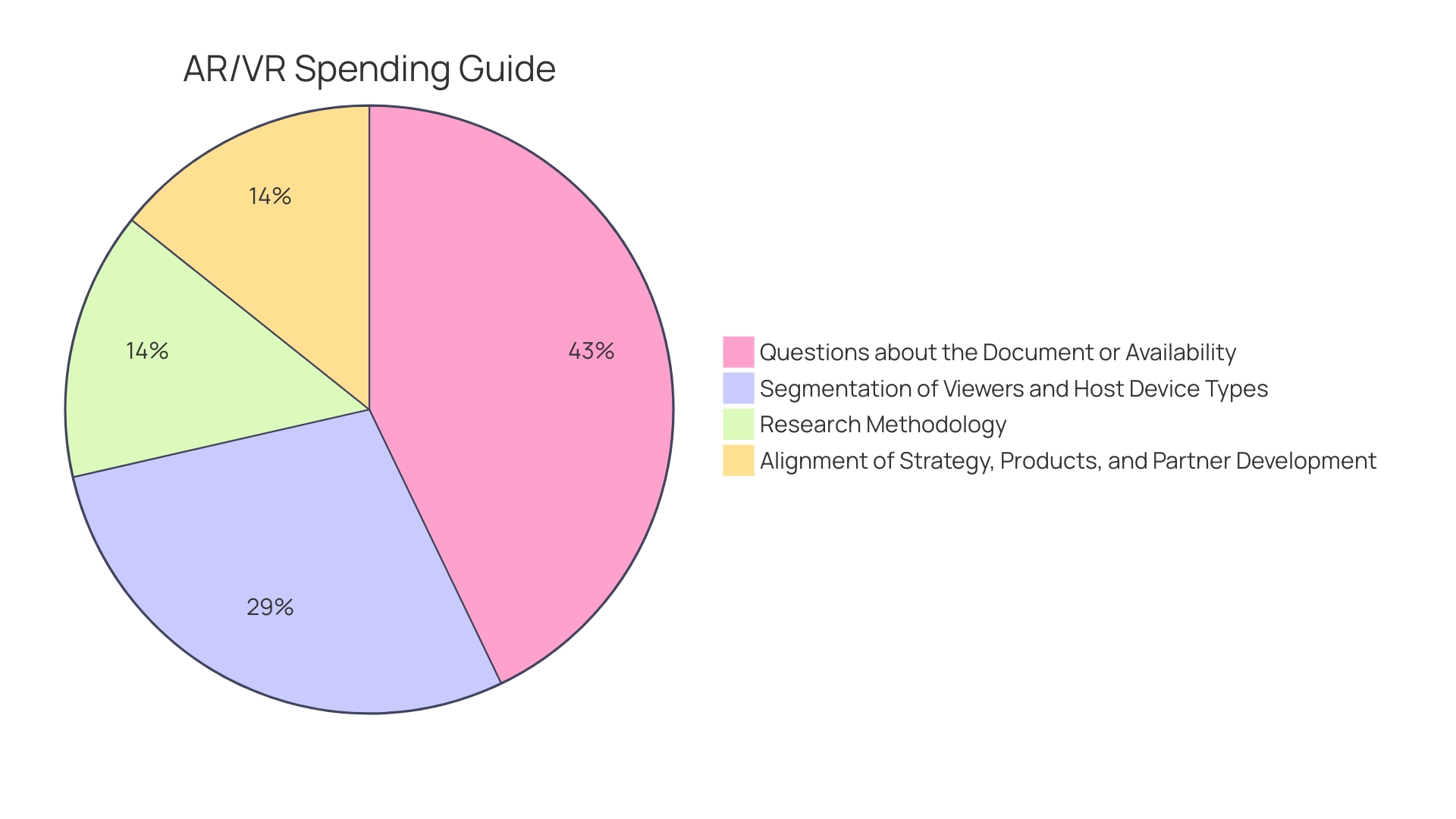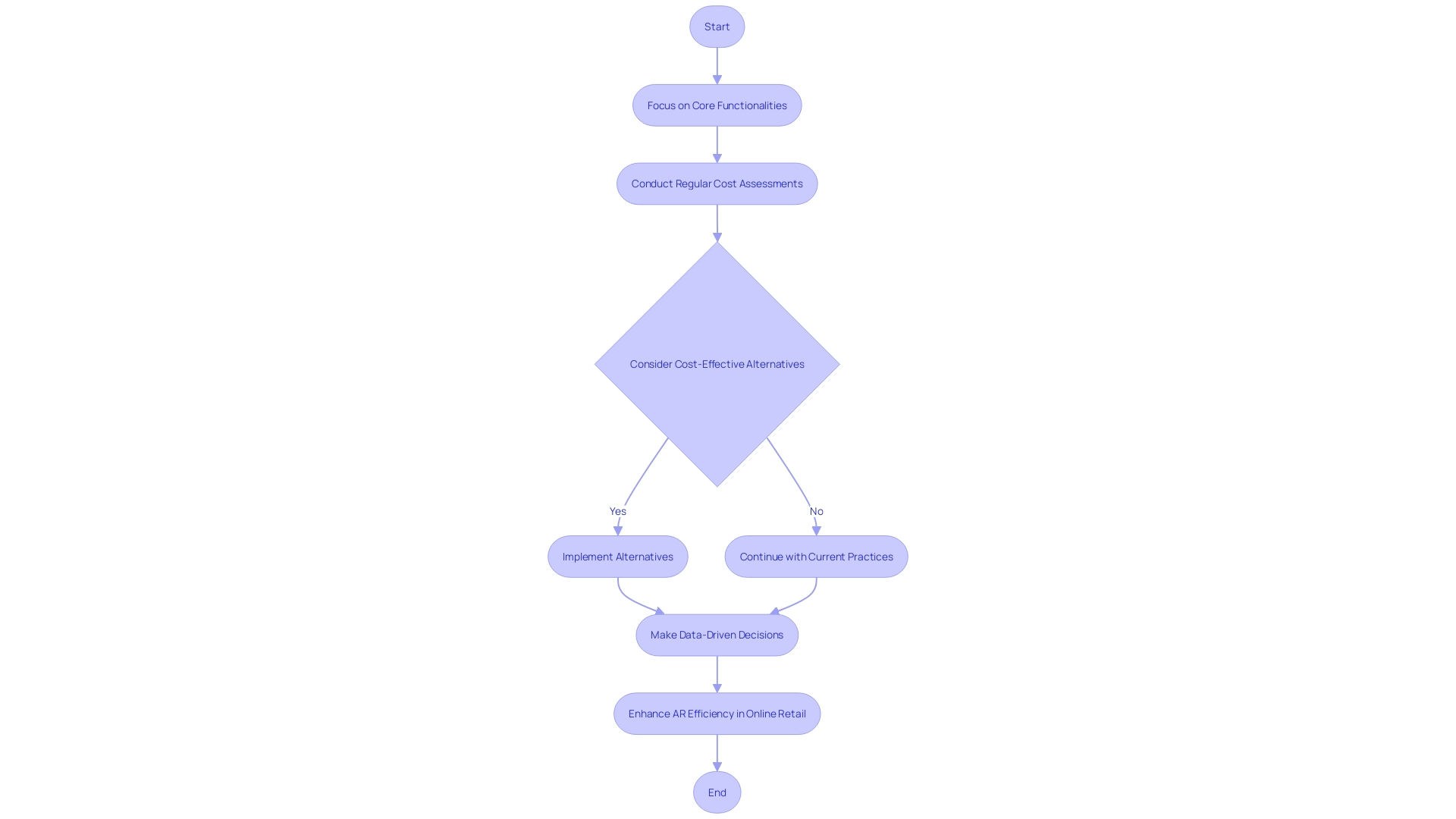Introduction
Augmented Reality (AR) is revolutionizing the online retail industry, offering immersive experiences that transform customer engagement. As businesses consider integrating AR, understanding the financial implications becomes crucial. The costs of AR implementation can vary widely, influenced by factors such as technology complexity, deployment scale, and ongoing maintenance.
Beauty brands like Avon and retail giants like Wal-Mart have already experienced remarkable success with AR, showcasing its potential for significant returns on investment. However, developing AR solutions requires specialized teams and substantial investment. Despite the costs, deploying AR in online retail goes beyond financial considerations—it's about enhancing user experiences, driving sales, and creating interactive opportunities for customers.
With the market flourishing and investments surging, retailers must carefully weigh the expenses against the long-term value that AR brings to the digital shopping experience.
Understanding the Costs of Augmented Reality
Augmented Reality (AR) is transforming online retail, offering immersive experiences that are reshaping customer engagement. As businesses consider integrating AR, understanding the financial implications is paramount. AR implementation costs can vary widely, influenced by factors such as the complexity of the technology, the scale of deployment, and ongoing maintenance.
For instance, beauty brands have witnessed remarkable success with AR, as evidenced by Avon's integration of virtual try-on technology, which resulted in a 320% boost in conversion rates and a 33% increase in average order value. Similarly, retail giants like Wal-Mart have partnered with AR providers to offer virtual try-ons via mobile apps, hinting at the potential for significant returns on investment.
Yet, the development of AR solutions is intricate, often requiring a specialized team of developers. A small team can craft software that generates substantial revenue, but the initial creation and continuous improvement of the technology necessitate considerable investment.
The AR market is flourishing, with investments surging from industry leaders like Facebook, Intel, and Samsung, demonstrating the sector's robust growth. AR's versatility spans various industries, from consumer goods to healthcare, each with its own cost considerations. Software remains a critical component, with industry reports indicating annual spending on software outpacing hardware by at least 10%.
Ultimately, deploying AR in online retail is not just about the technology's cost but also about its capacity to enhance user experiences, drive sales, and create new interactive opportunities for customers. As AR continues to evolve, retailers must weigh the initial expenses against the long-term value AR brings to the digital shopping experience.
Step 1: Researching and Planning - Defining Objectives and Budget
Laying the groundwork for the integration of Augmented Reality (AR) into an online retail operation is a multifaceted process that demands a strategic approach encompassing clear objectives and a well-planned budget. The first critical step is to articulate the specific goals you hope to achieve with AR. For instance, whether the focus is to enrich the customer experience, amplify engagement, or elevate sales figures, each objective will necessitate a unique AR strategy.
The triumph of beauty giant Sephora in the digital domain exemplifies the importance of clear objectives. They have not only expanded their online presence but also enhanced their mobile app capabilities to provide a more immersive shopping experience.
When setting a budget, it is imperative to consider various costs, such as the expense of hardware, the investment in software development, and the financial outlay for ongoing maintenance. This comprehensive budgeting ensures the efficient allocation of resources and the avoidance of unforeseen expenditures, leading to a streamlined AR integration. ETP Group's experience demonstrates the significance of investing in robust and innovative retail solutions that span the entire spectrum of retail needs, ensuring that technology investments align with long-term business strategies.
Moreover, keeping abreast of industry trends and technological advancements is crucial. For example, Zara's integration of AI across its operations, including supply chain and inventory management, highlights how innovative technologies can substantially improve efficiency and customer engagement. Similarly, the emergence of checkout-free stores, like the new Dublin Town To Go store, signals a shift towards more autonomous and frictionless retail experiences that could be complemented by AR technologies.
Retailers must also be mindful of the broader impacts of technology adoption. The case of Avon, which saw a notable increase in conversion rate and average order value after introducing virtual try-on capabilities, illustrates the potential of AR to drive not just customer engagement but also tangible business results. The unified inventory visibility that is now a fundamental expectation among retailers further underscores the need for a holistic view of technology's role in retail.
In sum, a well-defined strategy that encompasses clear objectives and a meticulously planned budget, informed by industry benchmarks and trends, is the bedrock upon which successful AR implementation in online retail is built.
Step 2: Choosing the Right AR Content Creation Tools - Costs and Considerations
When selecting AR content creation tools for e-commerce, it's essential to consider several factors that ensure a successful integration that resonates with your digital strategy. The goal is to enhance the online shopping experience, similar to how Sephora revolutionized the beauty industry with its AI and AR-powered app, allowing customers to try products virtually. A tool's ease of use, compatibility with existing systems, and customization levels are key considerations.
For instance, H-E-B's use of AR during holiday seasons to boost in-store engagement serves as a reminder that the right tool can significantly impact customer interaction.
Cost is another critical factor, encompassing not just licensing fees and subscription plans but also potential costs for additional features. However, the most affordable option may not always be the best. It's imperative to analyze the balance between cost and functionality, ensuring that your choice not only fits the budget but also fulfills the requirements for an immersive AR experience.
This approach is in line with the current retail trends, emphasizing the importance of all-in-one platforms that amalgamate various systems into a seamless interface, as highlighted by retail technology experts.
Moreover, recent advancements in retail, including checkout-free stores powered by sophisticated technologies, exemplify the importance of selecting tools that can adapt and scale with evolving consumer behaviors and technological landscapes. By carefully evaluating AR content creation tools using these criteria, businesses can position themselves at the cusp of retail innovation, much like the industry leaders who have already embarked on this transformative digital journey.
Step 3: Creating Augmented Reality Content - Costs of 3D Models and Development
Augmented reality (AR) in online retail is revolutionizing the shopping experience, offering a more immersive and personalized way for customers to engage with products. The creation of captivating AR content is essential for businesses looking to tap into this innovative technology, as seen with beauty brand Avon's remarkable success. After implementing Perfect's AR technology, Avon reported a staggering 320% increase in conversion rates and a 33% rise in average order value among customers using the virtual try-on feature.
This underscores the potential AR has in boosting sales and enhancing the customer experience.
Developing AR content, however, involves certain costs and technical considerations. High-quality 3D modeling services are at the core of this process, with costs varying according to the complexity and intricacy of the models. Moreover, skilled developers are needed to bring the AR experience to life, which represents an additional investment.
According to insights from the 2024 Consumer Electronics Show (CES), companies like PERFECT are scaling their operations, expanding the reach of AR technology through partnerships with major retailers like Wal-Mart.
To manage these investments effectively, it's crucial for companies to meticulously assess their content creation budget. Outsourcing 3D modeling services or seeking more cost-effective solutions could be viable strategies to control expenses. The importance of aligning product strategy with industry-specific AR technology cannot be overstated, as emphasized by Marcus Torchia from IDC's Data and Analytics Group.
Furthermore, the retail landscape continues to evolve with technological advancements, as demonstrated by the introduction of checkout-free stores powered by Zippin technology at Dublin Airport. Such innovations highlight the growing role of technology in retail and the importance of staying abreast of new developments to drive sales.
In conclusion, while the upfront costs of creating AR content can be significant, the long-term benefits—increased sales, enhanced customer engagement, and reduced product returns—make it a worthwhile investment. Businesses should strategically plan their AR implementations to ensure they are well-positioned to capitalize on this transformative technology.

Step 4: Promoting Your Augmented Reality Content - Distribution and Marketing Costs
Maximizing the impact of augmented reality (AR) content in the online retail sector requires strategic promotion to reach the desired audience effectively. Swisscom's successful campaign for its 'blue' consumer services, targeting the Swiss market's under-40 demographic, exemplifies best practices in AR marketing. They developed a custom Snapchat lens that invited users into an interactive, AR-enhanced 'blue space,' which significantly increased brand visibility and engagement.
In the highly competitive e-commerce landscape, the allocation of marketing budgets to AR promotion can lead to substantial returns. As demonstrated by Avon's use of Perfect's virtual try-on technology, the company experienced a 320% boost in conversion rates and a 33% increase in average order value, underscoring the potential of AR in enhancing online shopping experiences.
To replicate such success, retailers must consider various marketing channels, including social media, influencer collaborations, and email marketing. These channels each have associated costs, from ad spend to influencer fees and platform expenses. IDC's research vice president, Marcus Torchia, emphasizes the importance of aligning strategy and product offerings with industry-specific technologies and use cases, suggesting a tailored approach to AR marketing.
Furthermore, with technological advancements such as Zippin's checkout-free shopping experience at Dublin Airport, it's clear that integrating AR into marketing efforts can create seamless and engaging consumer experiences. By leveraging narrative analysis, revenue projections, and case studies, as recommended by Artillery Intelligence, businesses can formulate an AR marketing strategy that not only captivates their target audience but also drives measurable business outcomes.

Factors Affecting AR Costs - Hardware, Software, and Expertise
Understanding the financial implications of integrating Augmented Reality (AR) into an e-commerce platform is essential for any director of e-commerce. The investment into AR technology is not a one-off cost but a multifaceted expense, including hardware, software, and expertise. The sophistication and compatibility of AR hardware with existing systems can influence costs significantly, with some setups requiring more advanced and scalable solutions.
On the software front, solutions range in price depending on their features, customization levels, and how seamlessly they integrate with current operations. For instance, an AI-powered virtual try-on experience for products, such as makeup or fashion items, could drastically enhance user engagement. This technology's impact is proven by Avon's reported 320% increase in conversion rates after implementing a virtual try-on feature.
Moreover, the partnership between Wal-Mart and PERFECT to offer virtual try-on experiences in the Wal-Mart app exemplifies how AR can be scaled for mass consumer use.
Investing in skilled professionals or an AR agency might increase initial costs, but their expertise is crucial for successful implementation and could lead to a higher return on investment. As noted in Artillery Intelligence's report, case studies of AR implementation, like the augmented aisles in H-E-B grocery stores, highlight the importance of aligning strategy and technology with industry-specific needs.
In the digital realm, where accessibility and convenience are paramount, the incorporation of AR can redefine the customer experience, offering a virtual fitting room that rivals physical shopping. The success of AR in e-commerce hinges on understanding the balance between development costs, including the creation of custom AR solutions, and the potential for increased online engagement and sales. With online shopping becoming more prevalent due to factors like the pandemic and climate conditions, AR's ability to provide realistic product visualizations has become a game-changer for the industry.
Best Practices for Managing AR Costs - Optimization and Efficiency
To ensure your online retail venture thrives with the integration of Augmented Reality (AR), strategic cost management is paramount. Here are best practices to enhance the efficiency of your AR implementation:
-
Focus on Core Functionalities: Begin by honing in on essential AR features that serve your business goals. Sidestep the allure of superfluous add-ons, as they can inflate your budget without corresponding benefits.
-
Regular Cost Assessments: Establish a routine to review AR expenses, pinpointing opportunities to streamline and economize. This ongoing evaluation is crucial for maintaining a lean and effective AR strategy.
-
Cost-Effective Alternatives: Consider collaborating with external AR specialists or adopting more affordable AR platforms. This can offer a balance between quality and cost, especially for elements outside your core competencies.
-
Data-Driven Decisions: Deploy analytics tools to gauge the impact of your AR features. This data can reveal insights into customer engagement and areas ripe for improvement, ensuring your AR investment is well-placed.
Embracing these practices, inspired by the successes of industry leaders like Sephora and H-E-B, can help you navigate the financial complexities of AR. For instance, Sephora's digital transformation, which includes AR experiences in their mobile app, demonstrates the power of prioritizing functionality and customer engagement. Meanwhile, H-E-B's use of AR to boost in-store traffic during the holiday season exemplifies the strategic application of AR for specific business outcomes.
Utilize these insights to sharpen your AR initiatives, ensuring they are both cost-efficient and tailored to drive your online retail success.

Case Studies: Real-World Examples of AR Costs and ROI
Exploring the transformative potential of Augmented Reality (AR) in online retail through real-world applications reveals a landscape where strategic investments yield substantial returns. For instance, Avon's adoption of Perfect's AR technology to offer virtual try-on experiences resulted in a staggering 320% boost in conversion rates and a 33% growth in average order values. These impressive figures underscore AR's capacity to revolutionize customer engagement and amplify sales.
Similarly, Sephora's pioneering digital transformation, which began with the launch of its website and was followed by the early adoption of a mobile app, exemplifies a successful long-term digital strategy. By focusing on interactive shopping experiences such as virtual try-ons, Sephora has remained at the forefront in the beauty retail space, ensuring their app remains a top contender in the Apple App Store's Shopping Category.
Moreover, the collaboration between PERFECT and Wal-Mart to integrate virtual try-on capabilities into Wal-Mart's mobile app exemplifies how AR is scaling to meet the demands of a broader consumer base. This strategic move is expected to empower customers to virtually try on a plethora of beauty products, thereby enhancing the online shopping experience and driving further sales.
The advancements in AR also address a significant challenge in online retail: the high return rates of products. With the ability to virtually try on fashion items, retailers see a marked reduction in returns, which in the case of a German women's clothing retailer, were as high as 56% online, compared to just 3% in-store. By leveraging AR, online retailers can offer a more accurate representation of their products, leading to more satisfied customers and fewer returns.
As we witness the integration of AI and AR technologies in retail, it's clear that the immersive experiences they provide are not just novelties but essential tools for driving sales, reducing returns, and building customer loyalty in a competitive digital marketplace.
Conclusion
Augmented Reality (AR) is revolutionizing online retail, offering immersive experiences that transform customer engagement. The costs of AR implementation vary widely, influenced by factors like technology complexity and deployment scale. Despite the financial considerations, deploying AR in online retail goes beyond monetary value.
It's about enhancing user experiences, driving sales, and creating interactive opportunities for customers.
When integrating AR, defining clear objectives and establishing a well-planned budget is crucial. Each objective requires a unique AR strategy, and considering costs like hardware, software development, and maintenance ensures efficient resource allocation.
Choosing the right AR content creation tools is vital for a successful integration aligned with your digital strategy. Factors like ease of use, compatibility, and customization levels should be considered. Analyzing the balance between cost and functionality ensures a seamless and immersive AR experience.
Creating captivating AR content involves costs and technical considerations. High-quality 3D modeling services and skilled developers are essential. Assessing the content creation budget and considering cost-effective solutions can help manage expenses.
Promoting AR content requires strategic distribution and marketing efforts across various channels. Aligning strategy and product offerings with industry-specific technologies creates engaging consumer experiences and drives measurable business outcomes.
Understanding the financial implications of integrating AR is crucial. Hardware, software, and expertise contribute to the costs. Investing in skilled professionals or an AR agency can lead to successful implementation aligned with industry-specific needs.
To manage AR costs efficiently, focus on core functionalities, regularly assess expenses, consider cost-effective alternatives, and make data-driven decisions. These best practices, inspired by industry leaders, navigate the financial complexities of AR and drive online retail success.
Real-world examples demonstrate the transformative potential and substantial returns of AR. By strategically investing in AR, retailers can create immersive experiences that enhance the online shopping journey and deliver long-term value to customers.





